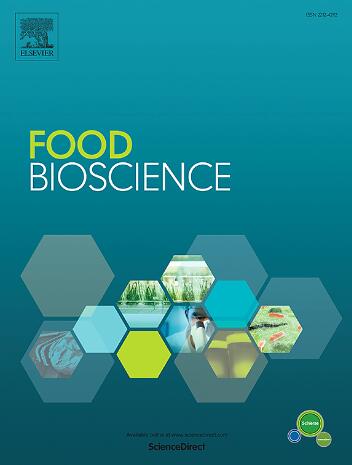Exploring the anti-Listeria monocytogenes mechanisms of the postbiotics derived from Ligilactobacillus salivarius LSA-6 and its biopreservative effects on Inner Mongolian cheese
IF 5.9
1区 农林科学
Q1 FOOD SCIENCE & TECHNOLOGY
引用次数: 0
Abstract
Food contamination caused by Listeria monocytogenes has been a major concern worldwide, and postbiotics derived from lactic acid bacteria are promising in controlling foodborne pathogens, while the antibacterial effects and mechanisms are still largely unclear. This study aimed to investigate the anti-L. monocytogenes activity and mechanisms of the postbiotics derived from Ligilactobacillus salivarius LSA-6 (Postbio-LSA-6), and its potential application in Inner Mongolian cheese preservation. Results showed Postbio-LSA-6 exhibited efficient anti-L. monocytogenes activity, the minimal inhibitory concentration (MIC) was 4 mg/mL. Postbio-LSA-6 at 2MIC could significantly disrupt the bacterial membrane integrity, the membrane-damaged cells percentage increased to 49.6 %, leading to the intercellular materials leakage and cell death. Besides, Postbio-LSA-6 at 2MIC could induce the oxidative stress in bacterial cells, the membrane-fluorescence cells percentage increased to 46 %, resulting in lipid peroxidation. Untargeted metabolomics analysis showed organic acids and fatty acids such as erythronic acid, citric acid, 2-hydroxybutyric acid, and oleic acid were identified as the main differentially expressed metabolites in Postbio-LSA-6. Furthermore, Postbio-LSA-6 could effectively maintain the moisture content and pH stability, reduce the color and texture alterations, and extend the shelf life of cheese samples by suppressing microbial proliferation and lipid oxidation. These results offered new insights on the antibacterial activities of postbiotics against foodborne pathogens, and provided a low-cost, label-friendly biopreservation strategy for local dairy products preservation.
探讨唾液脂乳杆菌LSA-6后生制剂抗单核增生李斯特菌的作用机制及其对内蒙古奶酪的生物保鲜作用
由单核增生李斯特菌引起的食品污染一直是全球关注的焦点,乳酸菌衍生的后生制剂在控制食源性致病菌方面很有前景,但其抗菌作用和机制仍不清楚。本研究旨在探讨抗l。唾液脂乳杆菌LSA-6 (Postbio-LSA-6)后生成物的单核细胞增生活性、机制及其在内蒙古奶酪保鲜中的应用前景结果表明,Postbio-LSA-6具有良好的抗l活性。最小抑菌浓度(MIC)为4 mg/mL。lsa -6在2MIC时可显著破坏细菌膜的完整性,膜损伤细胞比例增加至49.6%,导致细胞间物质渗漏和细胞死亡。此外,在2MIC时,Postbio-LSA-6可诱导细菌细胞氧化应激,膜荧光细胞百分比增加至46%,导致脂质过氧化。非靶向代谢组学分析显示,有机酸和脂肪酸,如红藓酸、柠檬酸、2-羟基丁酸和油酸是Postbio-LSA-6中主要的差异表达代谢物。此外,Postbio-LSA-6可以通过抑制微生物增殖和脂质氧化,有效维持奶酪样品的水分含量和pH稳定性,减少颜色和质地变化,延长保质期。这些结果为后生物制剂对食源性病原体的抗菌活性提供了新的见解,并为当地乳制品的保存提供了一种低成本、标签友好的生物保存策略。
本文章由计算机程序翻译,如有差异,请以英文原文为准。
求助全文
约1分钟内获得全文
求助全文
来源期刊

Food Bioscience
Biochemistry, Genetics and Molecular Biology-Biochemistry
CiteScore
6.40
自引率
5.80%
发文量
671
审稿时长
27 days
期刊介绍:
Food Bioscience is a peer-reviewed journal that aims to provide a forum for recent developments in the field of bio-related food research. The journal focuses on both fundamental and applied research worldwide, with special attention to ethnic and cultural aspects of food bioresearch.
 求助内容:
求助内容: 应助结果提醒方式:
应助结果提醒方式:


